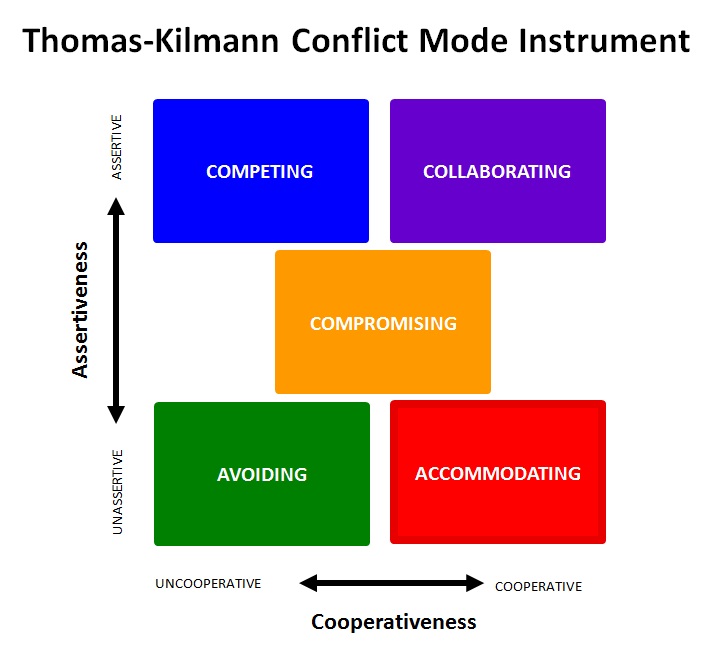Managing Conflict Effectively
Conflict has become more of an acquired taste for me as my career has progressed. My wife often characterizes me as a pushover and when our children were young I was the parent they always approached when they wanted something their mother would not allow.
I wrote a metaphorical post about those who are invertebrates when dealing with conflict and there have been times in my life when I was one of those spineless types who would not stand up and push back when needed.
 During the past 2+ years, I have spoken more on conflict than I have done at any prior time in my life. Many times in my career I have trained others about conflict using the TKI, the Thomas-Kilmann Instrument. This assessment helps people understand their preferred way of dealing with conflict and it also breaks down interactions into two dimensions, assertiveness and cooperativeness. Using these axes the instrument breaks conflict down as follows:
During the past 2+ years, I have spoken more on conflict than I have done at any prior time in my life. Many times in my career I have trained others about conflict using the TKI, the Thomas-Kilmann Instrument. This assessment helps people understand their preferred way of dealing with conflict and it also breaks down interactions into two dimensions, assertiveness and cooperativeness. Using these axes the instrument breaks conflict down as follows:
- Low assertiveness and Low cooperation: Avoiding
- Low assertiveness and High cooperation: Accommodation
- Medium assertiveness and Medium cooperation: Compromising
- High assertiveness and Low cooperation: Competing
- High assertiveness and High cooperation: Collaboration
Understanding your preferred style can help you know what to look for when conflict arises. Knowing the other styles helps you know what you can do in order to modify your style when needed.
Conflict is something I have become more comfortable with as I have gotten more comfortable running my own business. As I gained more experience with my work I learned how to become more assertive when the situation demanded me to do so. I would never characterize myself as pushy, but I can be much more persistent now than at earlier stages in my career.
Which style best describes you?
Which style is the most challenging for you?
Leaders need to become comfortable with other styles and also need to recognize the styles of others who work with and for them.
